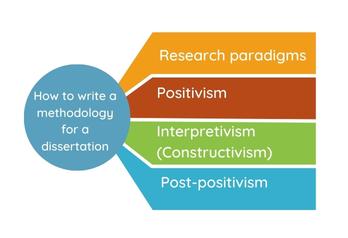How to write a methodology for a dissertation
Tagged: Research Methodology
The methodology part will be the chapter that comes after your literature review. After researching and identifying the gap in the current literature, you may generate ideas for your suggested research. In addition, you will have included a recommended technique in your research proposal, where you will have offered options on how to conduct the research: either through a primary data approach or by gathering secondary data.
Data
1. Primary dataPrimary data is any information you gather through your own research, such as surveys, interviews, questionnaires, focus groups, observations, and experiments. Primary data-collecting methods do not include gathering information from the work and study of other scholars.
2. Secondary dataSecondary data collecting is the gathering of information from prior researchers' efforts. Consider concentrating on another researcher's experiment and utilizing their findings as the foundation for your dissertation. For example, consider gathering the results of two distinct experiments and comparing the results of these studies concerning the topic stated.
Once you've established what kind of data you'll be gathering, you'll need to decide whether it'll be qualitative or quantitative since this will affect the analysis of your study.
 Analysis
Analysis 1. Quantitative
Quantitative research generates conclusions exclusively on the studied topic and employs statistical, mathematical, and computer programs.
If the researcher computed the data and offered remarks on the percentages of respondents who gave specific answers, the closed-ended questionnaire would be analyzed using quantitative research. SPSS is a popular application for analyzing quantitative research.
2.QualitativeQualitative research, which is more commonly utilized in the social sciences and arts, is when a study aims to answer the questions of "why" and "how" something happened and explains the reasons using empirical mathematical models.
Small focus groups are frequently used in primary research that employs qualitative research.
Because the answers provided do not lend themselves to being processed in the manner outlined above for closed surveys, an open-ended questionnaire that collects and evaluates a variety of verbal replies would be analyzed using qualitative methodologies.
Mixed MethodologyAnother alternative is to use a mixed methods strategy, which involves gathering both primary and secondary data.
All of the research proposal approaches indicated above will likely be employed in a dissertation analyzing, for example, the consequences of floods on the Wirral peninsula.
A literature review would be done to gather secondary data. For example, a statistical panel might analyze closed-ended surveys, and expert interviews may be remarked on using existing research.
As a result, both primary and secondary research approaches, as well as qualitative and quantitative processes, will be used.
Writing your methodologyYou should begin your approach with a brief introduction to the chapter, including the study's objectives. Following that, it is recommended to begin by identifying and selecting a research paradigm for the dissertation.
1.Research paradigms:There are four major research approaches. Examples include positivism, interpretivism (also known as constructivism), post-positivism, and critical theory.
2.PositivismThe philosophical position that the validity of research is determined by objective experimental testing
3.Interpretivism (Constructivism):Interpretivism study is typically connected with qualitative research. This indicates that study findings are subject to the researcher's interpretation, such as replies to interview questions.
4. Post-positivism In contrast to positivism, post-positivism embraces subjectivity in research and evaluates qualitative and quantitative evidence.
After determining your research philosophy, you must decide on a research strategy and instrument.
Research approach – Two types can separate this:
1.Deductive research
2.Inductive research
Deductive research is the strategy you would use if you had hypotheses that needed to be tested; you would use deductive research.
Inductive research is developing a hypothesis to explain a data set or any patterns that emerge from those facts.
It is vital to include a sub-section on the data analysis that will be utilized to combine and analyze the data acquired in the study for both primary and secondary data.
Checklist for writing a methodology.- Have I chosen a research approach that is within my capabilities and aligns with my objectives?
- Have I examined alternative research methodologies that could be appropriate?
- Can I describe why I ruled out these strategies in detail?
- Have I considered the advantages and disadvantages of my selected method?


